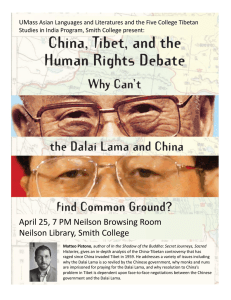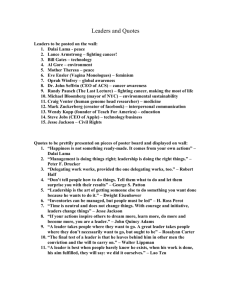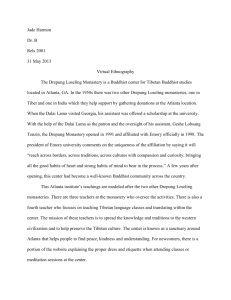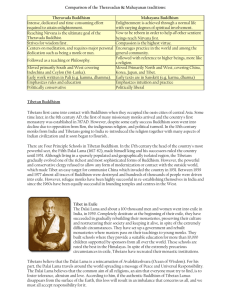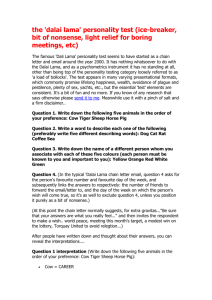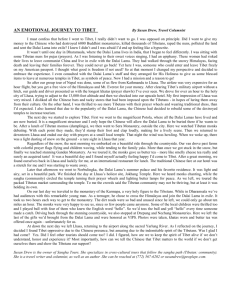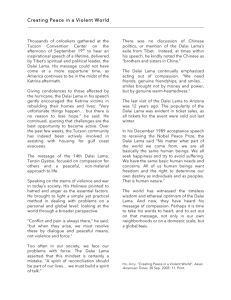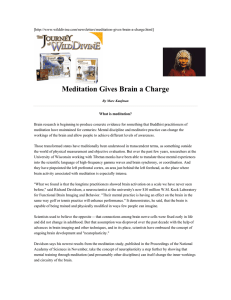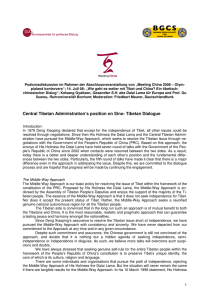Mind-body connections: a 100-year project The LasT Word
advertisement
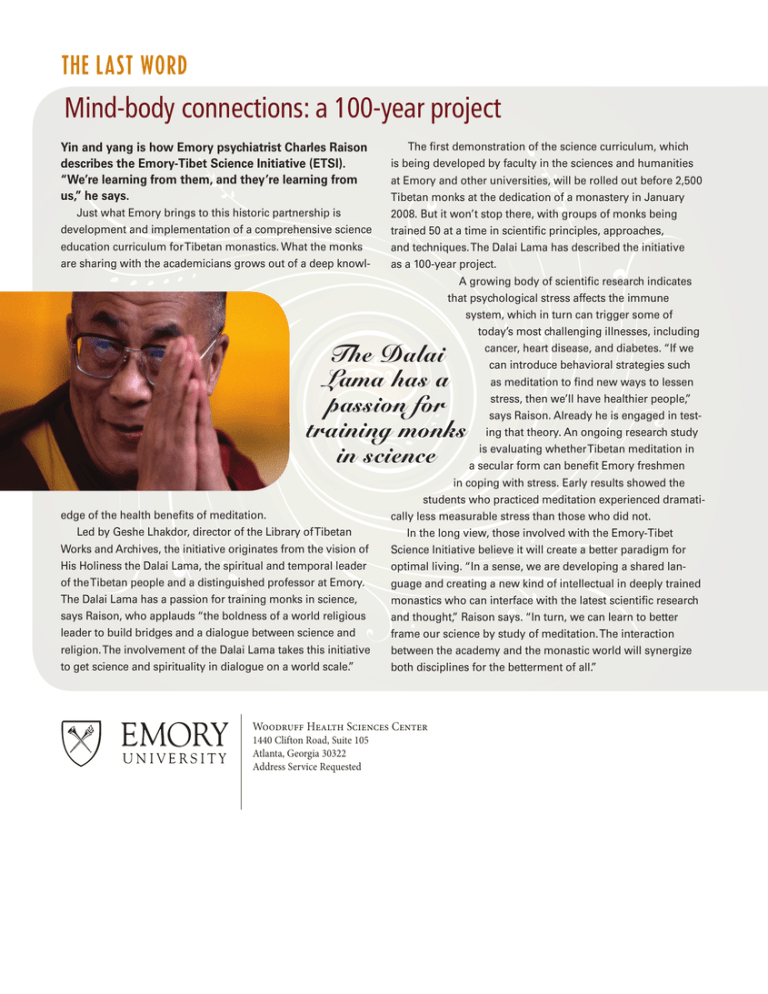
The Last Word Mind-body connections: a 100-year project Yin and yang is how Emory psychiatrist Charles Raison describes the Emory-Tibet Science Initiative (ETSI). “We’re learning from them, and they’re learning from us,” he says. Just what Emory brings to this historic partnership is development and implementation of a comprehensive science education curriculum for Tibetan monastics. What the monks are sharing with the academicians grows out of a deep knowl- The first demonstration of the science curriculum, which is being developed by faculty in the sciences and humanities at Emory and other universities, will be rolled out before 2,500 Tibetan monks at the dedication of a monastery in January 2008. But it won’t stop there, with groups of monks being trained 50 at a time in scientific principles, approaches, and techniques. The Dalai Lama has described the initiative as a 100-year project. A growing body of scientific research indicates that psychological stress affects the immune system, which in turn can trigger some of today’s most challenging illnesses, including cancer, heart disease, and diabetes. “If we can introduce behavioral strategies such as meditation to find new ways to lessen stress, then we’ll have healthier people,” says Raison. Already he is engaged in testing that theory. An ongoing research study is evaluating whether Tibetan meditation in a secular form can benefit Emory freshmen in coping with stress. Early results showed the students who practiced meditation experienced dramatically less measurable stress than those who did not. In the long view, those involved with the Emory-Tibet Science Initiative believe it will create a better paradigm for optimal living. “In a sense, we are developing a shared language and creating a new kind of intellectual in deeply trained monastics who can interface with the latest scientific research and thought,” Raison says. “In turn, we can learn to better frame our science by study of meditation. The interaction between the academy and the monastic world will synergize both disciplines for the betterment of all.” The Dalai Lama has a passion for training monks in science edge of the health benefits of meditation. Led by Geshe Lhakdor, director of the Library of Tibetan Works and Archives, the initiative originates from the vision of His Holiness the Dalai Lama, the spiritual and temporal leader of the Tibetan people and a distinguished professor at Emory. The Dalai Lama has a passion for training monks in science, says Raison, who applauds “the boldness of a world religious leader to build bridges and a dialogue between science and religion. The involvement of the Dalai Lama takes this initiative to get science and spirituality in dialogue on a world scale.” Woodruff Health Sciences Center 1440 Clifton Road, Suite 105 Atlanta, Georgia 30322 Address Service Requested
